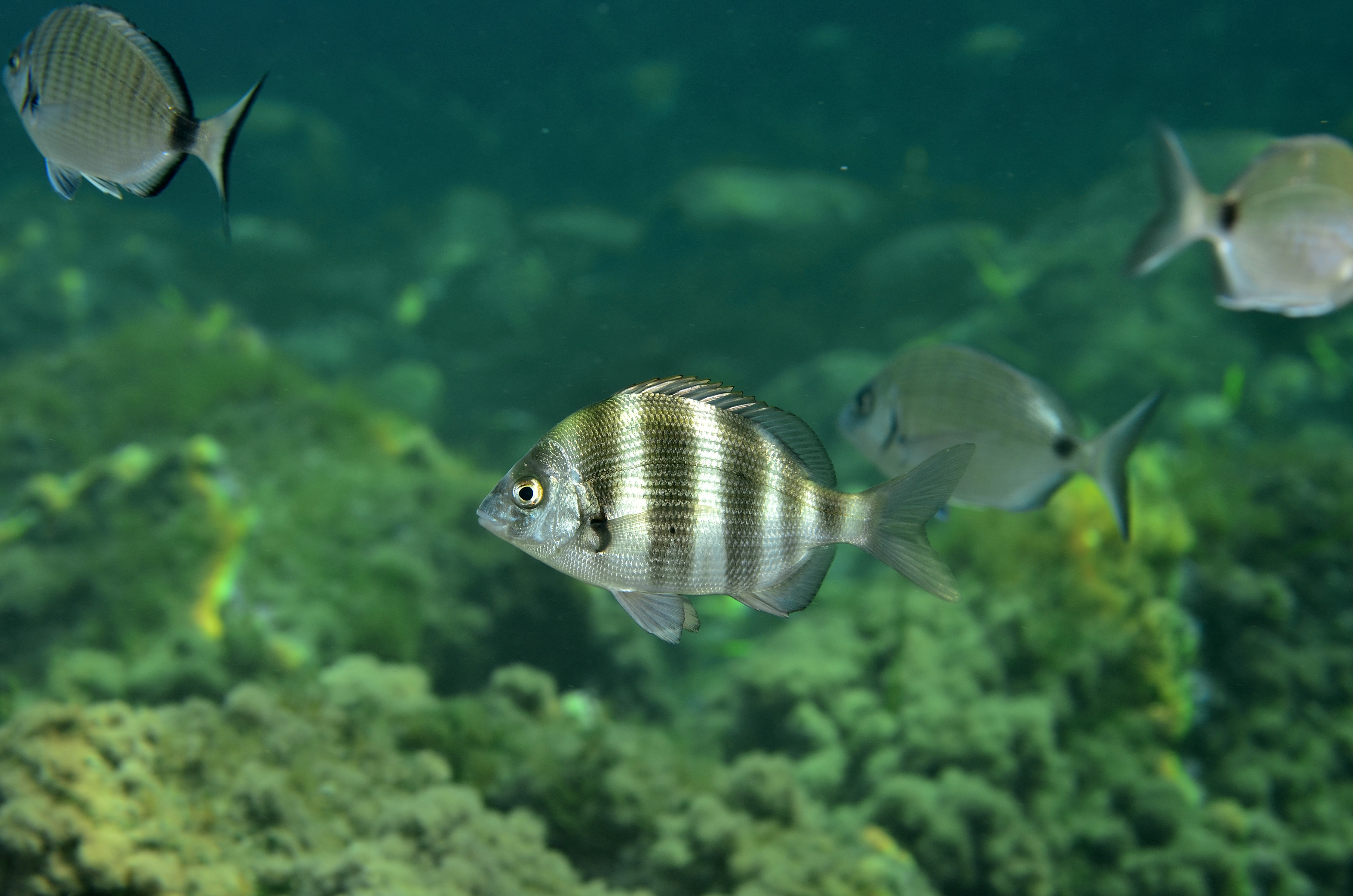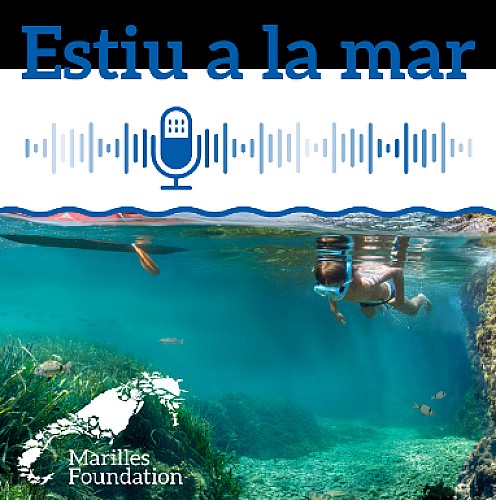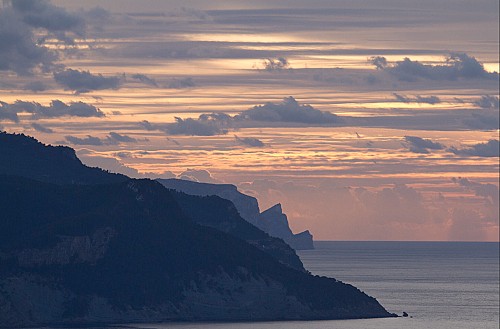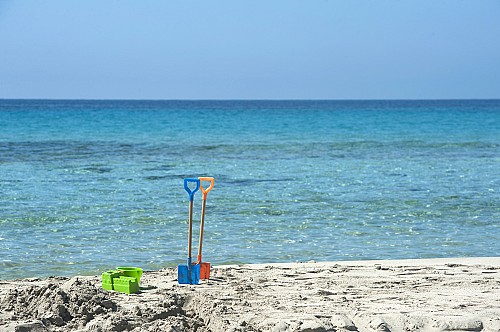Zebra sea bream (Diplodus cervinus) photographed in Ses Salines Natural Park, Ibiza. Photo: Xavier Mas.
The warm temperatures of October and early November remind us that the warming of our seas and oceans due to climate change is the greatest threat to marine life and the most difficult challenge we face as a society. Reluctantly accepting this reality, with a simple pair of goggles, a snorkel, and the desire to swim, we can enjoy the wonders hidden under the sea anywhere in our islands. As a small sample, I share some of my observations from the surface in Mallorca so far this autumn.
Goggles, snorkel, head under water, and action! These are some of the images of the last few weeks that have stuck in my memory: huge shoals of damselfish (Chromis chromis) chased by two small dentex (Dentex dentex) and a cormorant swimming – or "flying" – underwater in Illetes, Calvià; two small dusky groupers (Epinephelus marginatus) and a bastard grunt (Pomadasys incisus) – a rare species – hiding among the rocks on s'Illot beach, in the Bay of Pollença; a small sole (Synapturichtys kleinii) – yes, yes, sole, not the more frequent wide-eyed flounder (Bothus podas) – near the coast and a bull ray(Pteromylaeus bovinus), an increasingly common ray in our waters, swimming majestically along the outer area of s'Oratori beach in Calvià; a moray eel (Muraena helena) and some 30 XXL garfish (Belone belone) swimming around the Port of Valldemossa; and a pair of huge leerfish (Lichia amia) patrolling the waters of the bay of Santa Ponça, where, by the way, there is a very interesting Posidonia barrier reef.
The prize and the final surprise came when I swam around the rocky reefs of Ciutat Jardí, in Palma, where, among numerous shoals of two-banded sea bream (Diplodus vulgaris), white sea bream (Diplodus sargus), and salema (Sarpa salpa), I saw a zebra sea bream (Diplodus cervinus), one of the most difficult to observe sparids of sublime beauty. What a beautiful fish!
After years of snorkelling along the Balearic coast and throughout the Mediterranean, I have two thoughts. The first is that if the weather conditions allow it, any place is a good place to dive and enjoy marine life. We will always see something new. The second is that if we improve the conservation status of our sea and coastline – by reducing pressures, creating a network of marine sanctuaries, recovering species and habitats, and promoting sustainable fishing – the diversity and quality of the scenes we can see underwater will improve, the frequency with which we see them will multiply, and more people will enjoy this wonderful resource – our marine life – still too often ignored and unnoticed.
Note: In case you find it hard to visualise the fish I’ve mentioned, take a look at the series of Balearic marine life plates, the Marilles mini-guides, and MARE photos. These resources are within everyone's reach to learn and get to know the flora and fauna of the Balearic Sea.
ANIOL ESTEBAN - Director
Continue reading the newsletter





